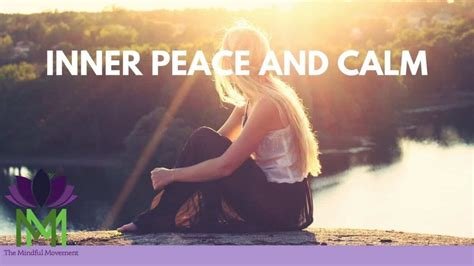Finding Inner Peace and Mindfulness: Practices for a Calm and Balanced Life
In today’s fast-paced and chaotic world, finding inner peace and mindfulness has become more important than ever. Many of us are constantly juggling numerous responsibilities and dealing with various stressors, which can take a toll on our mental and emotional well-being. In this blog post, we will explore the concept of inner peace and mindfulness, and how cultivating these qualities can lead to a more calm and balanced life. From understanding the true meaning of inner peace and mindfulness to exploring the benefits of incorporating these practices into our daily lives, we will delve into the transformative power of these practices. Additionally, we will discuss various techniques such as meditation and mindfulness-based stress reduction that can help us achieve a greater sense of inner peace. By the end of this blog post, you’ll be equipped with the tools and knowledge to start your own journey towards a more peaceful and mindful existence.
Understanding Inner Peace and Mindfulness
Inner peace and mindfulness are essential components of a balanced and fulfilling life. Understanding these concepts can lead to a profound transformation in the way we approach the world and interact with others.
Inner peace is the state of being mentally and spiritually at peace, with enough knowledge and understanding to keep oneself strong in the face of discord or stress. It is the ability to remain calm and composed, even in the midst of turmoil. Mindfulness, on the other hand, involves paying attention to the present moment without judgment. It is about being fully engaged in the here and now, without dwelling on the past or worrying about the future.
By understanding the principles of inner peace and mindfulness, individuals can learn to live more intentionally and purposefully. They can cultivate a greater sense of self-awareness and emotional resilience, leading to improved mental well-being and a deeper connection to the world around them.
Ultimately, by embracing inner peace and mindfulness, individuals can experience greater harmony and joy in their lives, as well as deeper connections with others and a more profound sense of purpose.
Benefits of Cultivating Inner Peace and Mindfulness
When it comes to living a fulfilling and balanced life, one of the most important factors to consider is the cultivation of inner peace and mindfulness. These two interconnected practices have numerous benefits that can positively impact our mental, emotional, and physical well-being.
First and foremost, cultivating inner peace can lead to a greater sense of calm and tranquility in our daily lives. By learning to quiet the mind and let go of unnecessary stress and worry, we can experience a profound sense of peace and serenity that allows us to navigate life’s challenges with greater ease and grace.
Moreover, practicing mindfulness can significantly enhance our mental clarity and focus. By training ourselves to be fully present in the current moment, we can develop the ability to concentrate on the task at hand and make well-informed decisions with a clear and focused mind.
Additionally, the cultivation of inner peace and mindfulness has shown to have numerous physical health benefits, such as reduced stress and anxiety, improved sleep quality, and enhanced immune function. By reducing the harmful effects of chronic stress on the body, we can lower the risk of developing various health issues and maintain overall well-being.
Starting Your Inner Peace Journey: Meditation
When embarking on your inner peace journey, meditation is a powerful and effective tool to help you connect with your inner self and find a sense of calm and tranquility amidst the chaos of daily life. By incorporating meditation into your daily routine, you can begin to cultivate a greater sense of mindfulness and awareness, which can ultimately lead to a more peaceful and balanced state of being.
Starting a meditation practice doesn’t have to be complicated or overwhelming. You can begin by finding a quiet and comfortable space where you can sit or lie down without any distractions. Close your eyes and take a few deep breaths, allowing yourself to relax and let go of any tension or stress you may be holding onto.
As you settle into this peaceful state, you can begin to focus on your breath, observing the rhythm of your inhalations and exhalations. If your mind starts to wander, gently guide your attention back to your breath, allowing yourself to be fully present in the moment.
It’s important to remember that meditation is a practice, and it’s okay if your mind drifts or if you feel restless at times. The key is to approach your practice with patience and compassion, allowing yourself to fully embrace the process without self-judgment.
Incorporating Mindful Practices into Your Daily Routine
When it comes to living a balanced and fulfilling life, one of the most important aspects to consider is incorporating mindful practices into your daily routine. Mindfulness is the practice of being present in the moment, acknowledging your thoughts and feelings without judgment, and cultivating a sense of awareness and acceptance. By incorporating mindful practices into your daily routine, you can experience a profound shift in your overall well-being and mental clarity.
One of the simplest ways to incorporate mindfulness into your daily routine is through the practice of daily meditation. Taking just a few minutes each day to sit quietly, focus on your breath, and let go of racing thoughts can have a powerful impact on your mental and emotional state. Whether it’s first thing in the morning, during your lunch break, or before bed, finding a consistent time to meditate can help you cultivate a greater sense of calm and focus throughout your day.
In addition to meditation, another way to incorporate mindful practices into your daily routine is by practicing gratitude. Taking time each day to reflect on the things you are grateful for can shift your mindset from focusing on what you lack to appreciating what you have. Whether it’s journaling about the things you’re thankful for, expressing gratitude to others, or simply taking a moment to savor the little moments in life, incorporating gratitude into your daily routine can enhance your sense of well-being and contentment.
Lastly, incorporating mindful practices into your daily routine can involve engaging in activities that bring you joy and peace. Whether it’s going for a walk in nature, practicing yoga, or simply savoring a cup of tea, taking time for activities that nourish your soul can help you stay grounded and present in the moment. By prioritizing these activities in your daily schedule, you can create a supportive environment for cultivating inner peace and mindfulness in your everyday life.
Exploring Mindfulness-Based Stress Reduction Techniques
When it comes to managing stress, the practice of mindfulness has been proven to be highly effective. Mindfulness-based stress reduction (MBSR) techniques are a set of practices that aim to help individuals cope with stress and improve their overall well-being. One of the key components of MBSR is meditation, which involves focusing on the present moment and cultivating awareness of one’s thoughts and feelings. Through regular meditation practice, individuals can learn to recognize and manage their stress triggers more effectively.
Another important aspect of MBSR is deep breathing exercises. Engaging in deep, slow breathing can help to calm the nervous system and reduce the body’s stress response. By incorporating deep breathing into their daily routine, individuals can experience a greater sense of relaxation and inner peace. Additionally, MBSR often involves practices such as yoga and mindful movement, which can help to release physical tension and promote a sense of well-being.
In addition to these practices, MBSR may also include body scan exercises, where individuals systematically focus on each part of their body, paying attention to any tension or discomfort. This technique can help individuals develop a greater awareness of their physical sensations and alleviate bodily stress. Moreover, MBSR often incorporates mindful eating practices, encouraging individuals to savor and fully experience the act of eating, which can promote a healthier relationship with food and reduce stress-related emotional eating.
Overall, exploring mindfulness-based stress reduction techniques can offer individuals powerful tools for managing stress and improving their overall well-being. By incorporating practices such as meditation, deep breathing, yoga, and mindful movement into their daily routine, individuals can experience a greater sense of calm and balance, even in the face of life’s challenges.
Achieving a Calm and Balanced Life through Inner Peace
Inner peace is a state of being mentally and spiritually at peace, with enough knowledge and understanding to keep oneself strong in the face of discord or stress. Achieving inner peace is not a one-time thing; it requires constant effort and dedication. It is important to incorporate mindfulness practices into your daily routine to achieve a calm and balanced life. By being mindful in our everyday activities, we can reduce stress and achieve a sense of inner peace.
One of the best ways to achieve inner peace is through meditation. Taking the time to quiet our minds and focus on the present moment can have a profound impact on our overall well-being. Meditation helps us to be more aware of our thoughts and emotions, leading to a greater sense of peace and clarity.
Another technique for achieving inner peace is through mindfulness-based stress reduction. This approach combines mindfulness meditation and yoga to help people become more aware of their thoughts and feelings. It can be incredibly effective in reducing stress and promoting a sense of calm and balance in life.
By cultivating inner peace and mindfulness, we can achieve a greater sense of well-being and balance in our lives. It’s important to remember that this is a journey, not a destination, and it requires continuous practice and dedication.
Frequently Asked Questions
What is inner peace and mindfulness?
Inner peace is a state of emotional and mental calmness, while mindfulness is the practice of being present and fully engaged in the current moment.
What are the benefits of cultivating inner peace and mindfulness?
Cultivating inner peace and mindfulness can lead to reduced stress, improved emotional well-being, better focus and concentration, and enhanced self-awareness.
How can I start my inner peace journey?
You can start your inner peace journey by incorporating meditation into your daily routine, practicing deep breathing exercises, and engaging in activities that bring you joy and relaxation.
What are some mindful practices that I can incorporate into my daily routine?
You can incorporate mindful practices into your daily routine by practicing gratitude, mindful eating, mindful walking, and engaging in daily self-reflection.
What are mindfulness-based stress reduction techniques?
Mindfulness-based stress reduction techniques include meditation, yoga, body scan exercises, and mindful movement practices to reduce stress and promote relaxation.
How can I achieve a calm and balanced life through inner peace?
You can achieve a calm and balanced life through inner peace by developing a regular mindfulness practice, setting boundaries, prioritizing self-care, and embracing a positive mindset.
How can I explore and deepen my understanding of inner peace and mindfulness?
You can explore and deepen your understanding of inner peace and mindfulness by attending mindfulness workshops, reading books on the topic, and seeking guidance from experienced meditation and mindfulness teachers.






